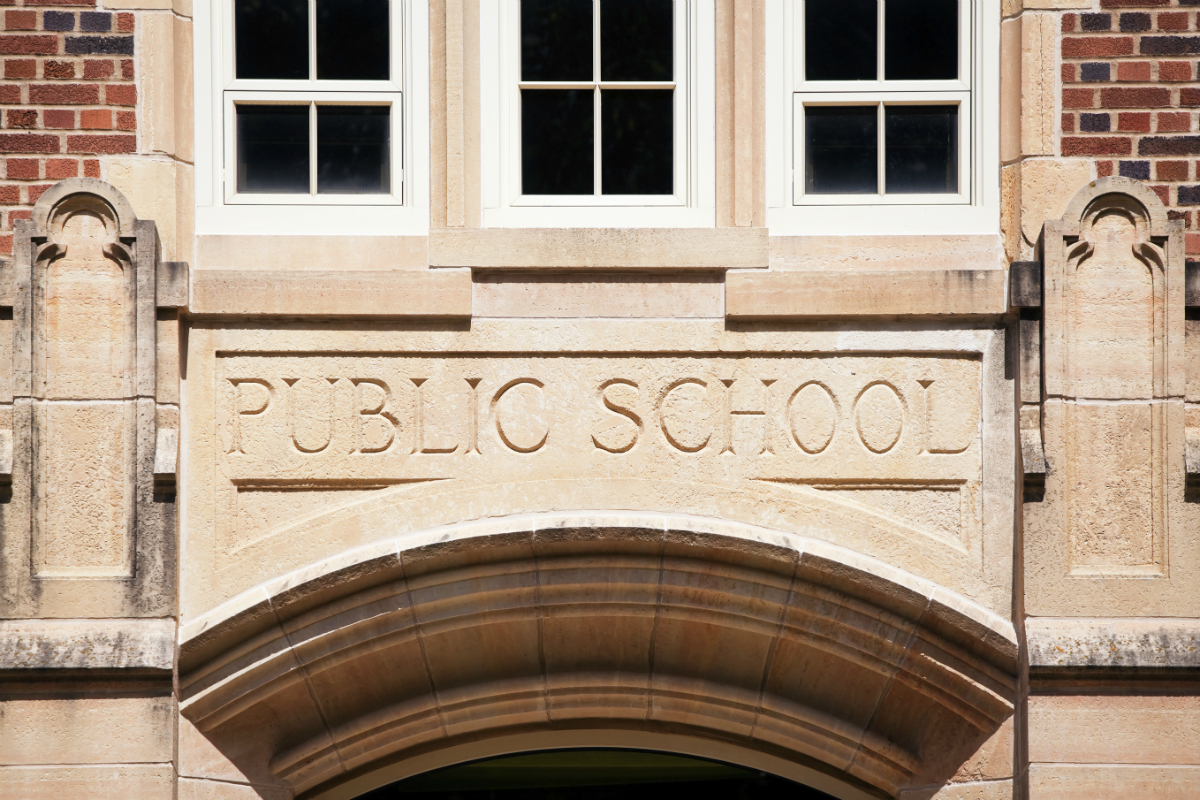School closures and a tanking economy due to the COVID-19 pandemic laid the backdrop for a panel discussion on April 28 about the current and future state of education funding in California, hosted by Policy Analysis for California Education. Panelists shared concerns about how schools will fare in the face of the severe economic downturn, agreeing that the most vulnerable students would be hardest hit, and that an infusion of state and federal funds is imperative to preserve public education in California.
CSBA has already sounded the alarm at the state and federal level, advocating for financial relief for school districts in this unprecedented situation. In an April 24 letter from CSBA CEO & Executive Director Vernon M. Billy to Gov. Gavin Newsom, Billy makes the case that California schools need additional funding and flexibility. Specifically, CSBA requests the Governor: Stay committed to the $1.2 billion allocated in ongoing Proposition 98 funds for a statutory 2.29 percent COLA; Repurpose the $1.5 billion in one-time proposals from the January budget to discretionary funding; use dollars within the State Reserve Fund to support schools; place an emergency bond on the November ballot of at least $2 billion student tech needs and school health and safety activities related to COVID-19.
Where we are now
California’s public schools receive the majority of their funding from the state, which, in turn, receives the bulk of its funding from income taxes. What that means is that in times of economic prosperity, schools tend to do fairly well and budgets increase year-to-year, if only incrementally. However, the opposite also holds true and in hard economic times, school funding follows suit and takes a large hit.
For example, California education spending surged rapidly during the recent economic recovery, with per-pupil spending rising from roughly $8,450 in 2012–13 to $13,100 just six years later, a 55 percent increase, according to independent researcher and consultant Carrie Hahnel. However, during the Great Recession, state and local funding for schools plunged by more than $7 billion, about 15 percent, in just one year. Economists are predicting that the coming recession will be worse.
When schools lose funding, higher-poverty districts may be affected more severely. “If cuts are made to [the Local Control Funding Formula], that will mean districts lose base grant funding, but that also high-poverty districts and district with many English learners will experience a commensurate hit to their supplemental and concentration funding,” Hahnel said. “While proportionally they are going to lose as much as every other district, in terms of per-pupil dollars, the impact will be more severe. On top of that, those districts usually have fewer fallbacks such as parcel taxes, contributions from the community and parent contributions.”
To protect against this disproportionate affect on already underserved students, Hahnel suggested the state could find a way to shield supplemental and concentration funding from cuts, either by adopting a hold harmless policy or adjusting the weights in a way that those districts are somewhat protected. She also suggested that any one-time funds could be targeted to the highest-need areas.
How bad it could get
Jessie Levin of the American Institutes for Research used models from the Public Policy Institute of California analyzing how Proposition 98 funding would fare during a mild, moderate and severe recession, combined with a new tool from the Learning Policy Institute, to project how bad education will be hit in different scenarios. Without federal stimulus funding, Levin predicted a mild recession would reduce district budgets by about $665 per student and in a severe recession districts would lose $1,591 per student. Couple that with modeling on the Great Recession and that number hits about $1,700 per student. The federal stimulus will provide $293 per student. “That gets us down to $1,400 — that’s a huge, huge number,” said Levin, who is also president of the Pacifica School District board of trustees. “I can’t say how accurate that projection is. However, it gives you a glimpse of how bad it might be.”
Panelists agreed it was impossible to know how bad things could get without more information, which simply isn’t available since the tax deadline has been extended to July. But Michael Fine, CEO of Fiscal Crisis & Management Assistance Team, cautioned against a best-case scenario. “We don’t want to set the stage, if we can at all avoid it, with too optimistic of a forecast. LEAs do not handle mid-year cuts well. It’s just not how we staff and structure our expenditures,” Fine said.
Fine outlined how this coming recession will defer from the Great Recession, saying it’s the pace of the decline in state revenues that is most concerning. While the first year of the previous recession was severe, it took 2.5-3 years to reach the peak. “I think we are going to be close to that this first year,” he said. “It affects the time we have to plan for this. There’s no question in my mind that the reductions to Prop 98 will be significant and will affect the LEA level significantly.”
The reality on the ground
“Our lived experience is that we’ve never come out of the recession,” said San Diego Unified School District board Vice President Richard Barrera. “This is my 12th year on the board and I have never experienced a budget season where we talk about what we’re going to increase — it’s always about what we’re going to cut.”
Barrera referred to the “silent recession” schools have experienced for years as rising costs have outpaced the level of increased revenue from the state. He said, despite repeated budget cuts throughout the years and increases in class sizes, the district has seen substantial increases in student academic achievement. He credited those improvements to a “UC A-G for All” policy in 2009 and to investments that have been made where the district knew they would be most effective — in teachers.
“Our focus is on building the capacity of our educators to improve educational outcomes for our students, including a focus on retaining our teachers and investing in professional development for them so that they are able to handle an increasing set of needs,” said Barrera. “That includes professional development around social-emotional learning. Our greatest fear as we go through this process is that we will end up completely destabilizing the teams that have managed to provide improved academic outcomes for our kids.”
Barrera estimates that in its switch to distance learning, San Diego USD has already spent about $200 per student over the 2019–20 budget. Looking ahead, in planning for the significant learning loss that is likely to result from school closures, the district estimates it will take another $500 per student above what is currently budgeted. And that is before considering how schools might look in the fall with the need for physical distancing and increased cleaning regimens.
“These types of cuts will devastate districts up and down the state and the impacts will mostly be felt by the most vulnerable students,” Barrera said.
What is needed
Panelists agreed that local educational agencies must be prioritized when it comes to aid from the state and federal governments, and that the systems on which the state bases its education funding should be examined as well.
Barrera encouraged the state to look to its Rainy Day Fund and direct a significant portion to education, but acknowledged a slice of that pie would not go nearly far enough. “As we look into the fall, we know the cuts of the magnitude we’re discussing our beyond the capacity of the state to handle and so the focus of our advocacy really needs to be about getting significant contributions for schools into the upcoming federal stimulus packages,” he said.
In an April 15 letter to Speaker of the House Nancy Pelosi and House Minority Leader Kevin McCarthy, CSBA and the Association of School Administrators requested such federal aid in future stimulus bills. “The ACSA-CSBA Federal Partnership supports the calls from other education groups for an additional $175 billion under the Education Stabilization Fund for the Elementary and Secondary School Emergency Relief Fund,” they write. “This funding is essential to ensure that California school districts can withstand anticipated pressure on local and state budgets and provide districts with the support necessary to help sustain them through additional months of uncertain operations before normal school activities can resume.
“To support the transition to online learning for all students, school districts require at least $2 billion for the E-rate program to help address the ‘homework gap,’ the reality that too many students do not have the internet access or technology necessary at home to make online instruction a viable alternative while schools remain closed.”
In looking at the bigger picture of school funding in California, researcher Hahnel suggested examining if the current system is working. “It could be time to talk about how to diversify our tax base, so California education is less dependent on those sensitive and volatile personal income taxes,” she said. “That could mean looking at our tax sources such as sales and use taxes, considering a greater role for property tax, but also looking at the state and local roles in education funding. There’s no reason that we can’t increase the local role in investing in education so long as the state plays an important part in the equalization role in distributing those funds to ensure equity.”





